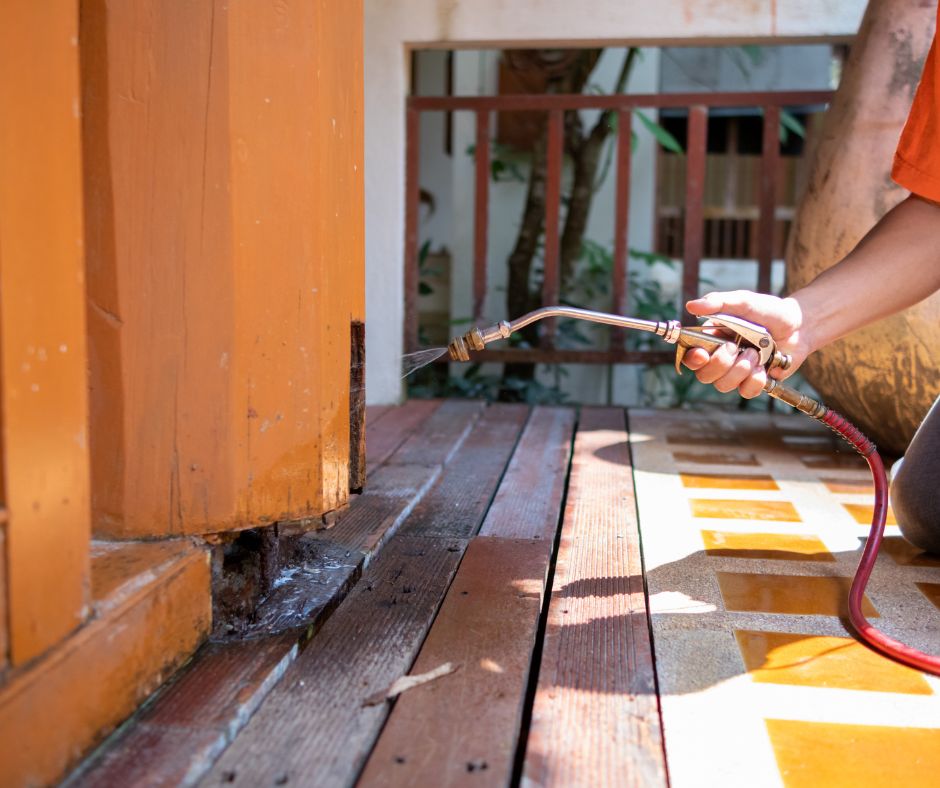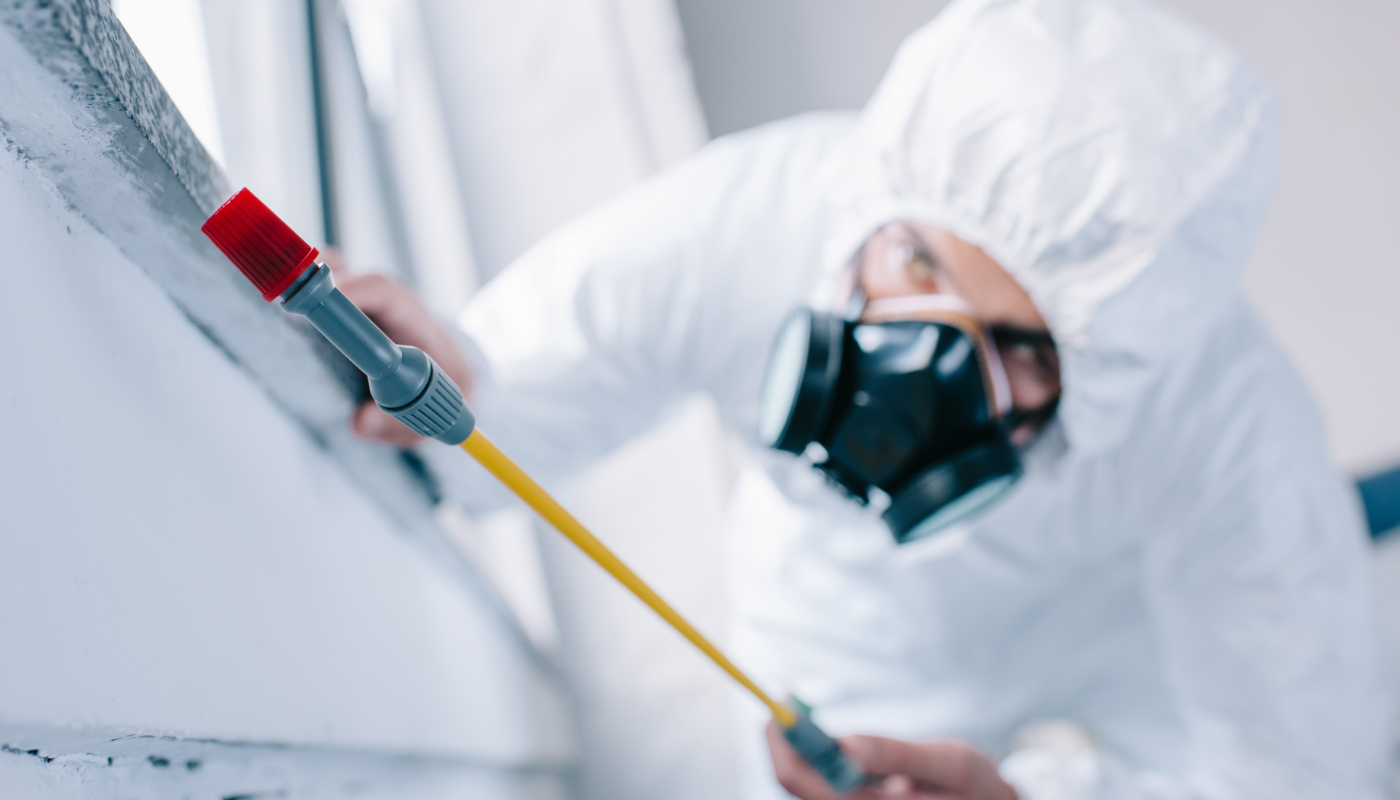Main Benefits of Termite Treatment Port Charlotte for Preventative Protection
Main Benefits of Termite Treatment Port Charlotte for Preventative Protection
Blog Article
Learn Concerning the Latest Advancements in Bug Control and Exactly How to Implement Efficient Therapy Solutions
In recent years, the area of bug control has actually experienced substantial developments, driven by the demand for efficient and lasting treatment remedies. Ingenious methods such as Integrated Parasite Monitoring (IPM) combine environmentally friendly practices with innovative technology, improving both effectiveness and environmental duty.
Eco-Friendly Pest Control Options
Recently, the need for environmentally friendly pest control alternatives has actually risen as companies and homeowners alike look for lasting alternatives to traditional chemical therapies. This shift is driven by expanding ecological awareness and a need to decrease the wellness risks related to artificial pesticides.

Environmentally friendly pest control approaches incorporate a range of methods that prioritize making use of natural materials and techniques. Integrated Pest Administration (IPM) is one such approach, integrating organic, cultural, and mechanical tactics to manage parasite populations while reducing dependence on chemicals (Wildlife removal services). This all natural method stresses prevention through habitat control and the introduction of natural predators, therefore promoting a well balanced community
One more popular option is the usage of herb chemicals obtained from plants, which often tend to be less damaging to non-target organisms. Products like neem oil and diatomaceous planet have gotten grip for their performance in controlling insects while posturing marginal risks to human wellness and the atmosphere.
In addition, exemption methods, such as sealing entry points and keeping sanitation, play an important duty in environmentally friendly parasite management. By adopting these lasting methods, businesses and individuals can efficiently take care of insects while advertising a healthier earth for future generations.
Smart Technology in Parasite Monitoring
Advancement is reshaping the landscape of bug administration, with clever technology emerging as a crucial pressure in enhancing effectiveness and effectiveness - Wildlife removal services. The combination of Internet of Things (IoT) devices, expert system (AI), and data analytics is changing just how bug control experts approach problems
Smart traps geared up with sensing units can identify parasite task in real-time, sending immediate alerts to operators. This permits for prompt feedbacks, minimizing damage and decreasing the requirement for extensive therapies. Additionally, AI formulas assess historical information to anticipate insect actions, making it possible for aggressive treatments based upon environmental problems and invasion patterns.
Drones and automatic vehicles are likewise playing a considerable role in bug management, giving airborne evaluations of huge areas, recognizing hotspots, and even distributing targeted therapies. These technologies not just simplify operations however likewise enhance safety by limiting human direct exposure to potentially hazardous chemicals.
Moreover, mobile applications equip consumers to keep an eye on insect activity and accessibility professional advice, promoting a joint approach to pest monitoring. On the whole, the fostering of smart technology is establishing a new standard in parasite control, emphasizing data-driven decisions and lasting methods that eventually benefit both professionals and home owners alike.
Integrated Insect Management Techniques
Integrated Insect Management (IPM) employs an alternative approach to pest control, incorporating different strategies to successfully handle insect populations while lessening threats to human health and wellness and the atmosphere. IPM revolves around comprehending the pest life process, their all-natural adversaries, and the ecosystem in which they pop over here prosper.
One of the essential parts of IPM is keeping track of pest populations via normal assessments and information collection. This allows for the identification of bug thresholds, determining when treatment is essential. Cultural methods, such as plant cleanliness, turning, and habitat adjustment, are vital in lowering bug frequency and More about the author advertising plant wellness.
Mechanical controls, consisting of traps and barriers, are also important in IPM. These approaches can physically get rid of or hinder bugs without the usage of chemicals. When essential, the wise application of chemical controls is used, concentrating on targeted treatments that minimize environmental impact.
Education and learning and collaboration among stakeholders, consisting of farmers, pest control specialists, and the area, are essential for the successful application of IPM techniques. By prioritizing sustainable practices, IPM not only addresses pest issues yet also cultivates a healthier ecosystem.
Biological Control Methods
Numerous organic control methods are increasingly acknowledged for their efficiency in taking care of parasite populaces while promoting eco-friendly balance. These methods harness all-natural predators, parasites, and pathogens to minimize pest numbers without relying upon synthetic chemicals. The intro of ladybugs can properly control aphid populations, while nematodes target soil-dwelling bug larvae.
In addition, making use of microbial pesticides, such as Bacillus thuringiensis (Bt), supplies an eco-friendly alternative for taking care of caterpillar bugs. These items particularly target pest varieties, decreasing damage to advantageous bugs and pollinators. Moreover, conservation organic control emphasizes boosting habitats for natural adversaries, such as birds and useful bugs, consequently motivating their existence in agricultural systems.
Research remains to disclose innovative techniques within this area, such as making use of scents to interrupt pest mating patterns or the development of biocontrol agents through genetic modification. Executing these techniques can lead to lasting bug monitoring methods that minimize the reliance on chemical treatments, ultimately cultivating much healthier environments. As awareness of these strategies expands, they are coming to be integral components of incorporated bug administration (IPM) approaches, supplying an equilibrium in between effective insect control and ecological stewardship.
Do It Yourself Bug Control Solutions
As homeowners seek efficient ways to deal with insect issues, do it yourself pest control remedies have actually obtained appeal for their accessibility and cost-effectiveness. These methods encourage individuals to deal with invasions making use of easily offered materials and methods, usually without the need for professional treatment.

Furthermore, maintaining proper cleanliness and regular examinations can stop insect access and nesting (Wildlife removal services). Straightforward practices, such as securing cracks, eliminating food resources, and decluttering, can significantly decrease bug populaces. Catches, both homemade and readily available, can likewise use efficient remedies for tracking and managing specific parasites like rats or pests

Verdict
The integration of environment-friendly bug control choices, clever innovation, and ingenious administration strategies offers an extensive approach to effective parasite administration. By embracing Integrated Parasite Management (IPM) and utilizing biological control approaches, together with DIY remedies, accountable and lasting pest control can be attained.
Environmentally friendly pest control techniques include a range of techniques that focus on the usage of natural substances and techniques. Integrated Pest Administration (IPM) is one such approach, integrating biological, social, and mechanical methods to take care of parasite populations while lowering reliance on chemicals. As understanding of these techniques expands, they are becoming essential components of incorporated pest administration (IPM) strategies, supplying a balance in between effective bug control and environmental stewardship.
The assimilation of environment-friendly insect control choices, wise modern technology, and ingenious management strategies offers a detailed approach to reliable bug administration. By welcoming Integrated Bug Management (IPM) and making use of organic control approaches, together with Do it yourself remedies, sustainable and liable parasite control can be achieved.
Report this page